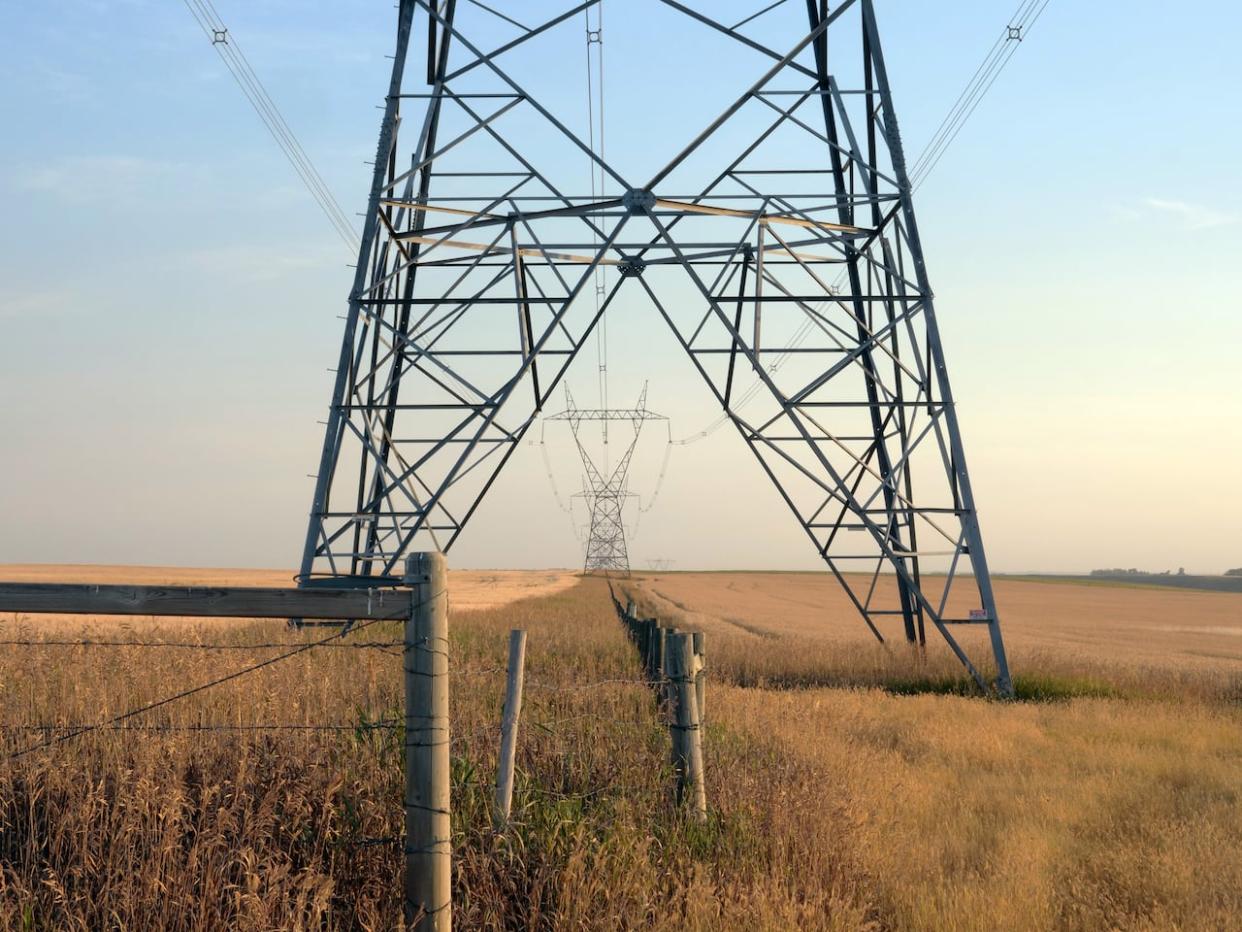Rotating brownouts leave thousands of Albertans without power Friday

Tens of thousands of Alberta households lost power Friday morning as a shortage of electrical generation prompted the province's electrical system operator to temporarily cut usage.
At least seven major power plants were generating little to no electricity early Friday afternoon, according to information on the Alberta Electric System Operator website.
"It is truly a combination of many things that occurred that got us into the rotating outage situation," Marie-France Samaroden, vice-president, grid reliability operations at AESO, said at a news conference Friday afternoon.
AESO issued a grid alert at 6:49 a.m., meaning the province's electric system was under stress and needed to use emergency reserves.
A wind power forecast overestimated the amount of wind power to be generated Friday morning by 800 megawatts, Samaroden said.
When the Keephills 2 natural gas plant west of Edmonton tripped offline two hours later, AESO asked power distribution companies, including Edmonton's Epcor and Calgary's Enmax, to begin rotating outages to their customers, she said.
That move saved about 250 MW of power, she said.
Enmax turned off power to about 25,000 Calgary customers for about 14 minutes, a spokesperson said in an email.
Epcor shut off power to about 20,000 customers across Edmonton for less than 30 minutes, a spokesperson said.
Fortis Alberta said about 15,000 customers in rural areas lost power, from the northeastern community of Conklin to the southern Alberta hamlet of Skiff.
It's a problem Alberta hasn't experienced in more than a decade, when a July 2013 heat wave led to rolling brownouts to conserve power.
Alberta relies on power imports from B.C., Saskatchewan and Montana, as demand outstrips generation.
AESO also issued a grid alert on Wednesday evening this week due to unexpected outages at power plants and high demand, Samaroden said. Renewables were generating plenty of power at the time, she said.
New plants, expected to generate a combined output of 1,800 MW, are forecast to come online in the next few months.
Samaroden said AESO has some "short-term mitigations" to bring more power online if needed before those plants begin running, expected on July 1.
"There's always a bit of an art to this, right? It's not science," she said, pointing to the challenge of forecasting.
Avoiding future brownouts
Blake Shaffer, an associate professor of economics at the University of Calgary specializing in electricity, called the brownouts a "far more serious situation" than the power demand crisis Alberta experienced in January.
A combination of record cold, surging power demand and some gas plants offline led Alberta to issue an emergency alert Jan. 12, pleading with the public to turn off appliances and lights to relieve an overtaxed grid.
Friday's challenge was a result of numerous plants being simultaneously offline with little help from solar and wind power, Shaffer said. Any rapid loss of power from major plants is difficult for an electric system operator to manage, he said.
"People like to assign blame on power system woes to their least favourite generation technology," Shaffer said. "And the reality is, all generation technologies have reliability challenges."
Rolling brownouts help protect essential equipment from losing power, he said.
"It avoids that catastrophic sudden blackout by just reducing load — involuntarily, mind you — but in a controlled manner," Shaffer said.
The operator released data in January showing the alerts are becoming more frequent.
Shaffer said there are steps the province could take to make the system more flexible, including allowing more power exchange with adjacent provinces and states, and building a second intertie with B.C. between the northern portions of the provinces.
He said Alberta could embrace smart metering and flexible demand, incentivizing customers to use more power at times outside peak demand. The province could also encourage the construction of "peaker plants" that can generate or distribute a lot of power, quickly, on short notice.
Speaking at an unrelated news conference Friday, Premier Danielle Smith pointed fingers at the design of Alberta's electrical system, saying it's too difficult to fire up a natural gas plant quickly if wind and solar plants can't generate forecasted power. She said the market should encourage gas plants to stay operating.
"This is at the heart of everything that we've been saying for the last year, that the the system is broken," Smith said. "It needs to be repaired. We need to be focused on base load power and reliable and affordable energy."
The government has tasked AESO with designing a restructured power market by this fall, with ambitions for new regulations to take effect in 2027.
Smith said one change under consideration is a day-ahead market, where prices are set a day ahead of the electricity being generated and consumed.
Andrew Leach, an energy and environmental economist and professor at the University of Alberta, said the current market is skewing production, because companies don't want to generate more power when supply is high and prices are low.
He said Alberta has been too slow to adapt its electricity system to evolving environmental policies and technologies.
"It's no longer good enough to say, 'Sorry, there were policies that were put in place seven or eight years ago that we didn't agree with,'" Leach said.
"If you are going to stand up today and say, 'Everyone knew this was coming,' then the logical question is, why didn't you act?"


